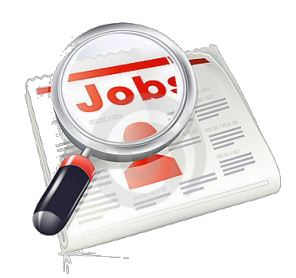
At this point, you should know the right way to make a resume, but it takes more than that to catch the recruiter’s eye.
What if your resume ends up buried in a pile of equally well-written resumes?
Well, the good news is that you don’t always have to compete.
Instead, you can send your resume directly to a hiring manager and get that job. This strategy doesn’t guarantee success, but might significantly boost your chances of standing out and getting the decision maker’s full attention, giving you a head start in your job search.
TIP 1: Research Online to Find a Hiring Manager
There’s plenty of tips on how to start on finding a career that’s right for you, including tips on doing the impossible — finding a job when there are none around.
Well, knocking on the employer’s door is one neat trick for accessing the “hidden job market”. This method works especially well in smaller companies in which one or two people make hiring decisions. Establishing a personal connection makes landing a job more likely than just relying on your resume.
But what if knocking on the employer’s door isn’t feasible?
You can still make that personal connection by emailing your resume directly to a hiring manager.
First, choose a few dream companies.
Next, figure out who is in charge of hiring people. Many companies have online retarget pages titled “our people” that feature employee bios.
You’re looking for two things — the hiring manager’s name and their email address.
If you find both, great. If you don’t find anything, don’t despair. In either case, you’re going to use LinkedIn next.
TIP 2: Leverage LinkedIn to Make First Contact
If you don’t have an optimized LinkedIn profile, it’s time to make one. Creating a LinkedIn profile is one of the best ways of harnessing the potential of online networks. It’s also a good way of demonstrating that you’re tech-savvy.
Once you’ve got a profile, enter either the name of the person you’ve found or “HR people who work at [name of company]” into the search box.
Now do what LinkedIn is best at, making connections. Request to connect with the person in question. And, it’s always a good idea to make the connection personal, delete the automatic message and replace it with one that offers something of value and a convincing explanation for connecting.
For example, do they have a blog? You could mention articles they’ve posted. If they don’t post, you could mention how impressed you are with a particular aspect of their company.
TIP 3: Send a Personal Message to a Hiring Manager
Once you’ve established a connection on LinkedIn, it’s time to email your resume.
Let’s start with your subject headline. Keep in mind that sometimes the subject length limit is set to 60 characters. That gets cut in half if a hiring manager views your email via mobile.
So what should you write? If you’ve done your research and you’re a talented professional you can use a solution headline:
I can boost XYZ’s growth
Otherwise, you can pitch your professional expertise:
Results-driven Engineer Interested in XYZ
For the salutation, taking a personalized approach to email is the digital equivalent of knocking on the employer’s door.
Once you’ve greeted the hiring manager, write your message.
Your message should highlight the value you are going to bring to the company. You should back up your claims with a few examples of your best achievements. Make sure you illustrate these accomplishments with facts and figures.
For example:
I increased sales by 15% thanks to maintaining relationships with 20 key clients.
Mention that your resume is attached and end with a postscript.
Adding a postscript in an email emphasizes key information intentionally. Do you have a certification or achievement that you want to spotlight? Add it as a postscript.
Now, finally, you can send your resume.
TIP 4: Track Your Emails & Follow-up
You can use an app like Yesware to check what’s going on with the email you sent to the hiring manager. The free trial version will let you track your resume and see when recruiters open and read your email.
Timing is important, too. The sooner you send out your resume, the greater the chance that the decision maker will offer you an interview. Click that send button on a Monday or Tuesday. Most job ads go live at the beginning of the week (58% Monday – Wednesday). What’s crucial though, is that 60% of resumes are sent the same week.
It’s cheap, old internet adage, but act now!
Diligent follow-up and follow-through will set you apart from the crowd and communicate excellence.
~John C. Maxwell
Key Takeaway
While trying to land a job can make you feel like the Sisyphus of job hunting, it’s not impossible. Communities such as lensa make the process much more enjoyable.
One of the best things you can do for your resume is to tailor it to the employer’s needs and to get creative about how you send it to a prospective employer.
Adding a personal touch is what will put you ahead of the competition.
